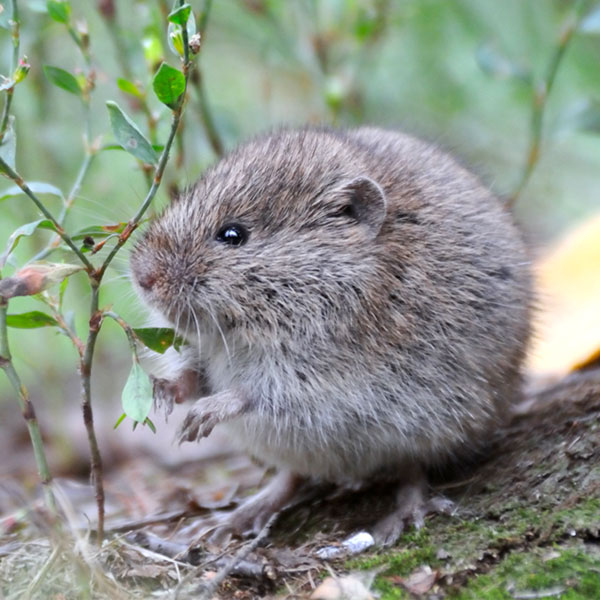Shield Your Lawn: Efficient Vole Control Techniques
Shield Your Lawn: Efficient Vole Control Techniques
Blog Article
Mastering Vole Pest Control: Extensive Insights on Invasion Prevention and Treatment Methods
By acknowledging the refined indications of vole invasion early on, we can take proactive steps to prevent extensive damages. In this discussion, we will certainly check out the nuances of vole habits, dig right into the identification of problem signs, and discover the most effective avoidance and treatment techniques.
Recognizing Vole Behavior
Examining the foraging patterns of voles offers valuable understandings into their actions and habitat choices. Voles, tiny rodents appearing like mice, are herbivores known for their underground tunneling activities. By observing their foraging habits, researchers can acquire a far better understanding of where voles prefer to develop their environments and the level of their environmental effect. Voles are prolific breeders, with a single female with the ability of generating a number of clutters in a year, making it crucial to understand their behavior for efficient parasite control techniques.
Research study suggests that voles show careful feeding behaviors, preferring roots, roots, and seeds. This dietary choice influences their foraging patterns, leading them to locations rich in greenery and ground cover. Additionally, voles are understood to produce elaborate tunnel systems for foraging and nesting objectives, suggesting a high degree of flexibility to their environments.
Understanding vole behavior is essential for implementing targeted bug control measures that disrupt their habitat choices and foraging activities (vole yard damage). By studying their habits, specialists can establish much more efficient avoidance and therapy methods to manage vole problems

Identifying Indications of Vole Problem
Vole infestations can be discovered by identifying particular indicators of their existence in an area. One of the most typical signs of a vole infestation is the existence of surface area runways.
An additional vital indicator of vole invasion is the existence of small burrow openings in the ground. Voles dig superficial burrow systems with numerous entrances and exits. These burrows offer as shelter and nesting websites for the voles. Furthermore, voles are understood to leave behind chewed plant stems, roots, and bulbs near their burrow openings, suggesting their feeding activity in the location.
Finding these droppings along paths or near burrow openings can validate a vole problem. By being watchful for these indicators, property owners can promptly address vole infestations and stop further damages.
Implementing Aggressive Avoidance Measures

Furthermore, using all-natural vole deterrents like castor oil-based repellents or predator pee can function as efficient safety nets. It is additionally a good idea to regularly check outside spaces for any type of indicators of vole activity, such as paths or tunnel openings, to resolve potential vole control infestations quickly. vole lawn damage. By taking on these proactive prevention approaches, homeowner can significantly minimize the possibility of vole damage and maintain the health and appearances of their landscapes
Reliable Therapy Techniques
Integrating targeted trapping techniques and making use of accepted rodenticides are necessary components of effective treatment strategies for taking care of vole problems. Routine monitoring and upkeep are also key aspects of successful therapy strategies to guarantee that vole populaces are maintained under control. By incorporating capturing, rodenticides, environment alteration, and regular monitoring, reliable vole pest control can be achieved.
Monitoring and Maintenance Tips
Maintaining a systematic schedule for surveillance and carrying out routine maintenance activities is crucial to sustain the effectiveness of vole bug control actions. Routine tracking permits the very early discovery of vole task, enabling prompt treatment prior to infestations intensify. To properly keep track of vole populaces, tactically put catches can be used in vole runways or near burrow entries. By consistently inspecting these catches, homeowner can assess the extent of vole task and adjust control techniques accordingly.
Additionally, preserving a clean and tidy landscape is necessary in vole prevention. Clearing up away particles, such as heaps of wood or dense plants, gets rid of prospective vole environments. Consistently trimming yards and trimming plants helps in reducing vole concealing places and lessens their access to food resources.
Additionally, recurring upkeep of physical barriers, such as fencings or cord mesh, is crucial to avoid vole breach. Evaluating and repairing any type of problems to these structures makes sure that vole control continues to be efficient in securing buildings from invasions. By incorporating these surveillance and upkeep methods right into a detailed vole pest control plan, individuals can efficiently handle vole populations and secure their properties from damage.
Final Thought
In verdict, grasping vole pest control calls for a solid understanding of vole behavior, the ability to identify indicators of problem, carrying out proactive avoidance measures, reliable therapy strategies, and regular tracking and upkeep. By taking a thorough approach to vole control, individuals can effectively take care of and protect against invasions, ultimately securing their building and bordering environment from damages brought on by these tiny rats.
In this conversation, we will explore the subtleties of vole actions, dig right into the identification of problem signs, and uncover the most efficient avoidance and therapy techniques.Integrating targeted trapping methods and making use of accepted rodenticides are important components of effective treatment techniques for taking care of vole problems. To successfully check vole populations, tactically put catches can be made use of in vole runways or near burrow entryways. Checking and repairing any kind of problems to these frameworks guarantees that vole control remains efficient in securing residential properties from problems. By integrating these monitoring and maintenance practices into an extensive vole pest control strategy, individuals can effectively handle vole populations and safeguard their residential or commercial properties from damage.
Report this page